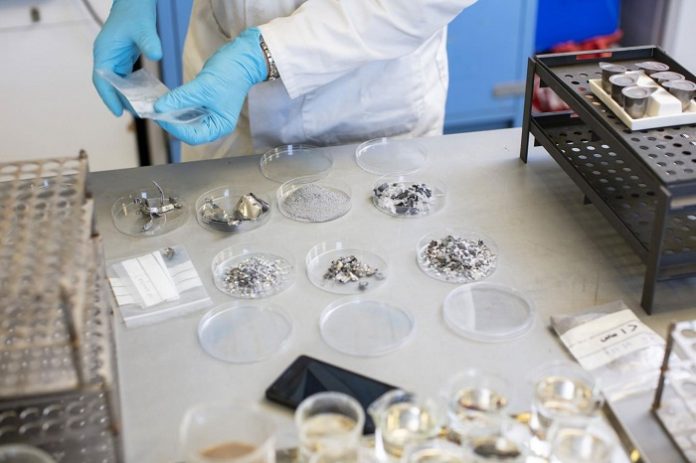
In a new study, scientists at the University of Plymouth analyzed the chemical contents of a smartphone.
Every year, 1.4 billion mobile phones are produced around the world. Although they are very common in daily life, little information is known about what they are made of and where those materials come from.
Moreover, many people don’t know what to do with the devices once they are not used anymore.
The current study tries to answer all of the questions.
In the study, the team aimed to demonstrate why people should all take a keener interest in what is contained within everyday electrical items.
They also planned to show the quantities of rare or so-called ‘conflict’ elements each phone contains.
They took the blended phone and mixed it at almost 500°C with a powerful oxidizer, sodium peroxide.
They then were able to do a detailed analysis of the resulting solution in acid to determine its precise chemical contents.
The results showed the phone used in the tests contained 33g of iron, 13g of silicon and 7g of chromium, as well as smaller quantities of other abundant substances.
However, it also found a number of critical elements including 900mg of tungsten and 70mg of cobalt and molybdenum, as well as 160mg of neodymium and 30mg of praseodymium.
And each phone contained 90mg of silver and 36mg of gold.
It also shows that to create just one phone you would need to mine 10-15kg of ore, including 7kg of high-grade gold ore, 1kg of typical copper ore, 750g of typical tungsten ore and 200g of typical nickel ore.
The team suggests that mining can be part of the solution to the world’s problems. But people are becoming more socially responsible and interested in the contents of what they are purchasing.
The team suggests that there are rare elements such as neodymium, praseodymium, gadolinium, and dysprosium, not to mention quantities of gold, silver and other high-value elements in daily mobile phones.
All of these need to be mined by extracting high-value ores, which is putting a significant strain on the planet.
The finding may encourage greater recycling rates once the devices reach the end of their useful lives.
Partly on the back of this study, several of the major mobile phone companies have committed to upping their recycling rates.
The team also worked with Devon-based animation company Real World Visuals to demonstrate the amount and variety of the Earth’s resources used each year in global mobile phone production.
The project leader is Dr. Arjan Dijkstra and Dr. Colin Wilkins, geologists from the University’s School of Geography, Earth and Environmental Sciences.
Copyright © 2019 Knowridge Science Report. All rights reserved.



